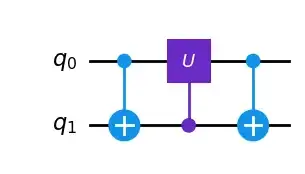Let us say that I have the state $a|00\rangle + b|01\rangle + c|10\rangle + d|11\rangle$. I wish to apply a one-qubit unitary (a $2\times2$ matrix) U on the subspace spanned by $|01\rangle$ and $|10\rangle$ (equivalently $|00\rangle$ and $|01\rangle$, after shifting the basis). Essentially I want the state $|\psi\rangle = U(b|01\rangle + c|10\rangle) + a|00\rangle + d|11\rangle$.
How can I do this in Qiskit? I tried methods which involve resetting the one qubit to 0 or involving mid-circuit measurements, but they seem to destroy the superposition of states, which I want to preserve.
